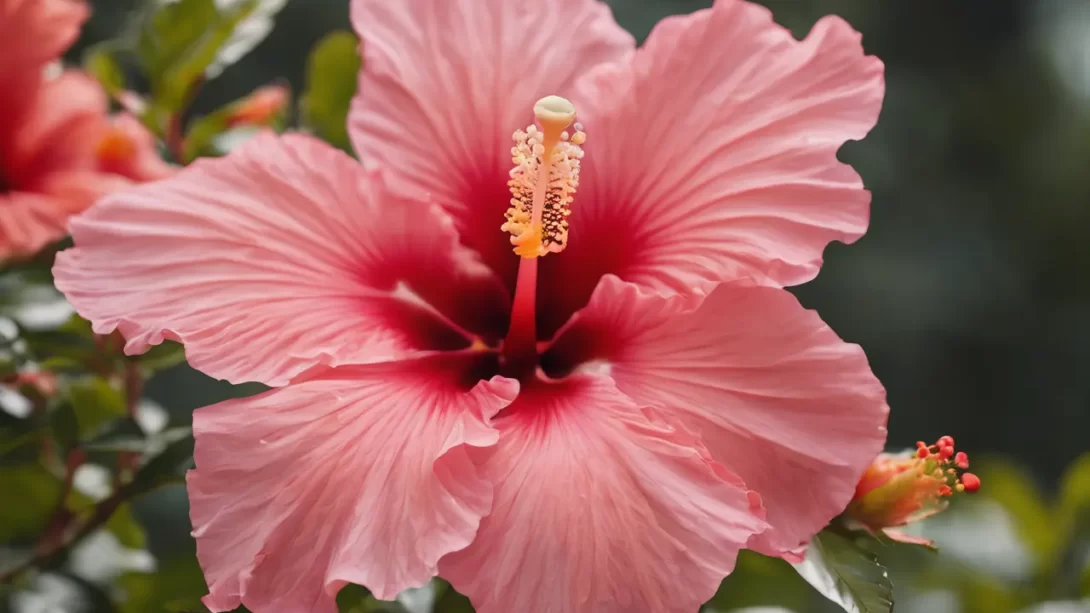Hibiscus, a genus that includes both tropical and hardy varieties, is celebrated for its large, vibrant flowers, making it a popular choice for gardeners and landscape enthusiasts. Understanding the specific watering needs of hibiscus plants is crucial for their health and blooming success. This guide delves into the factors influencing the watering requirements of hibiscus plants and offers practical advice for optimal care.
Hibiscus Plants
Hibiscus plants are known for their wide, trumpet-shaped flowers, which come in a range of colors. The two main types are the tropical hibiscus (Hibiscus rosa-sinensis) and hardy hibiscus (Hibiscus moscheutos and others), each with distinct growing conditions. Tropical hibiscus, as the name suggests, thrives in warm climates and is often grown as a potted plant in cooler regions, while hardy hibiscus can withstand colder temperatures and is commonly found in outdoor gardens.
The natural habitat of a hibiscus greatly influences its water needs. Tropical varieties, accustomed to a humid environment, may require more frequent watering, whereas hardy types are adapted to a range of conditions. The growth cycle of hibiscus, including active growing and dormant phases, also impacts its watering requirements.
Water Requirements of Hibiscus
Hibiscus plants generally prefer consistent moisture but do not tolerate being waterlogged. The basic guideline is to provide enough water to keep the soil evenly moist, especially during the growing season. Tropical hibiscus varieties typically need more water than their hardy counterparts, given their preference for a humid environment.
The water needs of a hibiscus plant are also influenced by factors like the season, plant size, and growth stage. During the active growing and blooming period in spring and summer, hibiscus plants may require more frequent watering. In contrast, during the dormant phase in fall and winter, water requirements decrease.
Factors Influencing Watering Frequency
Soil type is a critical factor in determining how often to water hibiscus plants. Soil that drains well and retains the right amount of moisture is ideal. In sandy soils, water drains quickly, necessitating more frequent watering, while clay soils hold moisture longer and may require less frequent watering.
Climate and weather conditions play a significant role in watering needs. In hotter, drier climates, hibiscus plants may need more water to offset increased evaporation. Conversely, in cooler or more humid conditions, the water demand might be lower. Sunlight exposure is another factor; plants in full sun may need more water than those in partial shade.
Proper Watering Techniques for Hibiscus
Effective watering goes beyond just the frequency and amount; it’s also about the method. For hibiscus plants, deep watering is recommended. This means watering the plant thoroughly, allowing moisture to reach the deeper roots, and then letting the soil dry out somewhat before the next watering. This technique encourages deeper root growth, which is beneficial for the plant’s overall health and drought resistance.
To avoid waterlogging, which can lead to root rot, ensure that the container or ground soil has good drainage. If you’re growing hibiscus in pots, use containers with drainage holes. For garden-planted hibiscus, amend the soil with organic matter to improve its drainage capacity if necessary.
Recognizing the signs of over-watering and under-watering is crucial. Over-watered hibiscus may display symptoms like yellowing leaves and a general appearance of wilting or sogginess. Under-watered plants, on the other hand, will have dry, brittle leaves and may stop flowering.
Additional Care Tips to Support Watering
Mulching can be a significant ally in maintaining soil moisture for hibiscus plants. A layer of organic mulch, such as bark or straw, around the base of the plant helps retain moisture, regulate soil temperature, and reduce weed competition.
Fertilization also plays a role in the watering needs of hibiscus. A well-fed plant with the right balance of nutrients will utilize water more effectively. Use a fertilizer formulated for hibiscus or flowering plants, and follow the recommended application schedule, typically more frequent during the growing season.
Pruning is another aspect of care that can impact water use. By removing dead or excess growth, you can ensure that water and nutrients are being used efficiently by the plant. Pruning also encourages more vigorous growth and blooming.
Troubleshooting Common Water-Related Issues
Common issues in hibiscus plants often stem from incorrect watering practices. Yellowing leaves can be a sign of both over-watering and under-watering, so it’s essential to assess the soil moisture to determine the cause. Wilting can indicate a lack of water, but if the soil is soggy, it might be a sign of too much water and possibly root rot.
Adjusting watering practices based on these symptoms is crucial. If over-watering is suspected, reduce the frequency and ensure proper drainage. In cases of under-watering, increase the watering frequency, making sure to water deeply each time.
Conclusion
Watering hibiscus plants correctly is a delicate balance that can significantly impact their health and blooming potential. To summarize, hibiscus plants prefer consistent moisture but are susceptible to damage from both over-watering and under-watering. The key is to maintain soil that is evenly moist, particularly during the growing season, and to adjust watering based on the plant’s growth stage, environmental conditions, and soil type.
Deep watering techniques, proper soil drainage, and regular monitoring are essential for healthy hibiscus plants. Additionally, complementary care practices like mulching, fertilizing, and pruning play a significant role in supporting the plant’s water needs and overall health.
Troubleshooting common water-related issues involves careful observation and timely adjustments to your watering routine. Yellowing leaves, wilting, and changes in flowering can all be indicators of water-related stress, requiring a thoughtful assessment and response.
Growing hibiscus offers a rewarding gardening experience, filled with vibrant blooms and lush foliage. With the right watering practices, along with attentive care and maintenance, your hibiscus plants can thrive, bringing beauty and color to your garden or home. Whether you are a seasoned gardener or a beginner, understanding the unique needs of these stunning plants can enhance your gardening journey, allowing you to enjoy the full splendor of hibiscus flowers.



